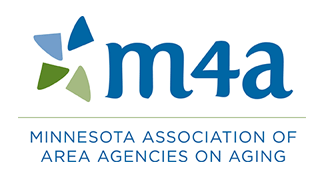What Kind of Housing Options do I Have?
When it comes time to look for alternative housing arrangements, there are a wide variety of options available. Consumers should be aware that the term “assisted living” is widely used and includes a variety of residential alternatives.
If you are interested in learning more, call the Senior LinkAge Line®: Link to a Local Aging Expert at 1-800-333-2433. They will provide you with additional and more specific information about services and the agencies and organizations that provide them. You can also access information at the MinnesotaHelp.info® website.
Adult Foster Care
Adult foster care is a home that provides sleeping accommodations and services for one to five adults and is licensed by the Minnesota Department of Human Services. The rooms may be private or shared and the dining areas, bathrooms and other spaces are shared family style. Adult foster care homes can offer a wide array of services.
Assisted Living
In Minnesota, assisted living is a service concept not a specific type of housing. It usually refers to housing that has services available. Adult foster care, board and lodge, market rate and subsidized rentals may all offer services. Check with the property manager for details.
Board and Lodge
Licensed facilities that provide sleeping accommodations and meals to five or more adults for a period of one week or more. They offer private or shared rooms with a private or attached bathroom, with common areas for dining and other activities. They vary greatly in size, some resemble small homes and others are more like apartment buildings. A variety of supportive services (housekeeping or laundry) or home care services (assistance with bathing or medication administration) are offered to residents.
Boarding Care
Boarding Care homes are licensed by the Minnesota Department of Health and are homes for persons needing minimal nursing care. They provide personal or custodial care and related services for five or more adults or people with disabilities. They have private or shared rooms with a private or attached bathroom. There are common areas for dining and for other activities.
Condominium
Residents of condominiums directly own real estate, because they own a particular unit in a building or development. Residents also have a share in and a right to use common areas within the structure. Most condominiums require a monthly payment to an association for expenses incurred in maintaining the common areas.
Cooperatives
Residents of cooperatives do not own a specific unit in the building or development, but own shares of a cooperative housing corporation that owns the building and all the units. Residents are shareholders in the whole building. They lease an apartment or unit from the corporation of which they are a shareholder. For more information visit: www.coophousing.org.
Market Rate
Market Rate rentals are housing establishments that have no government subsidy. The real estate market determines the rent level. Some market rate rentals offer a broad range of services, including meals, housekeeping and transportation.
Nursing Home
Nursing homes are long-term care facilities that offer a full array of personal, dietary, therapeutic, social, spiritual, recreational and nursing services to residents.
Subsidized Rental
Subsidized rental buildings serve low-income individuals. They are established by Housing and Urban Development (HUD) and vary with each county. They are owned by private or non-profit organizations and their construction and operations have been financed with federal and state resources. For more information visit: www.hud.gov.





